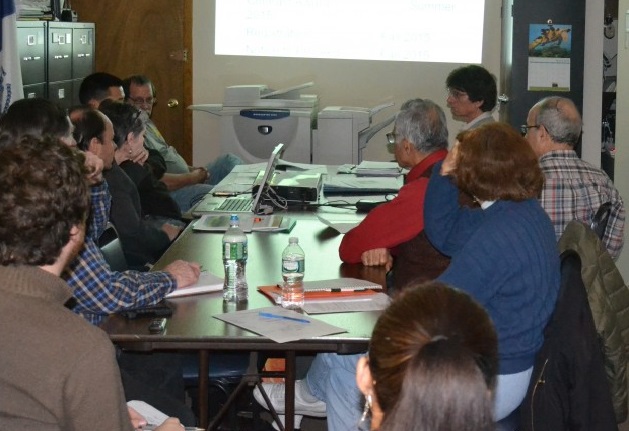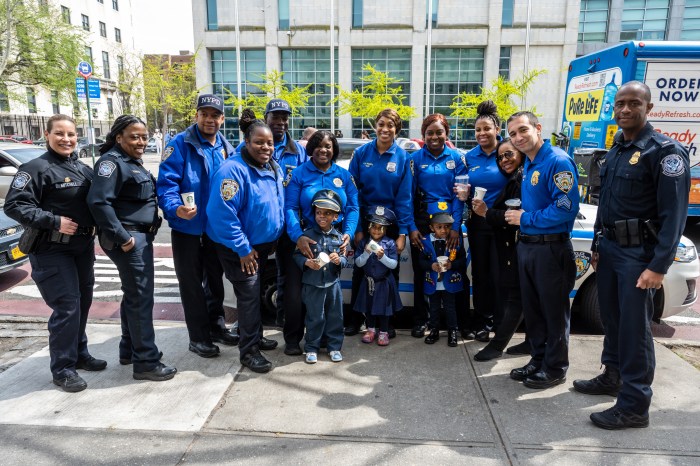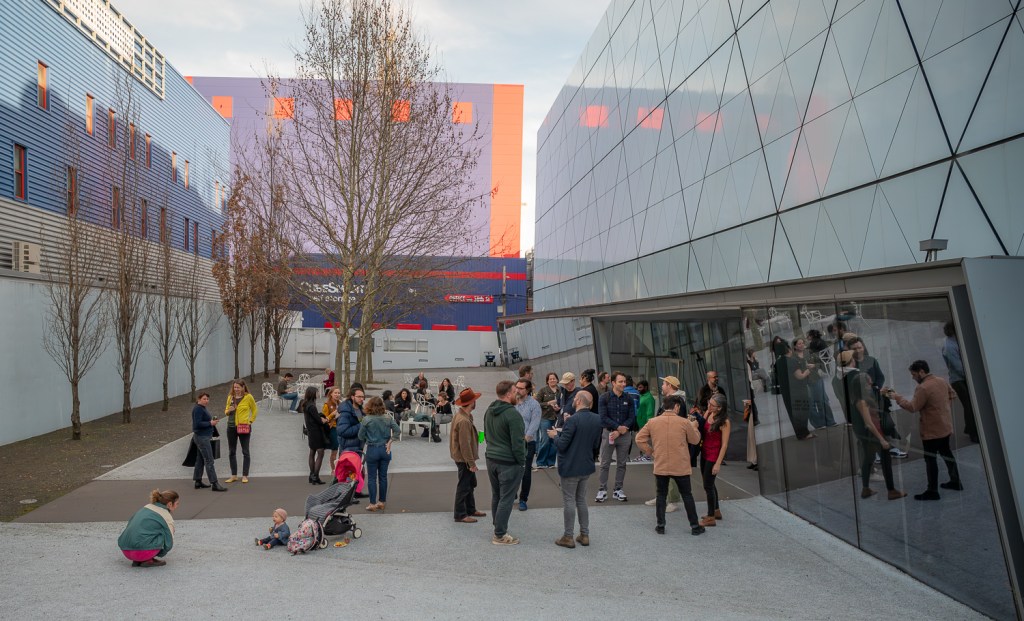Plans for the rehabilitation of the historic stone bridge in Highland Park headlined the Community Board 5 Parks Services Committee meeting on Tuesday.
Joannene Kidder, the chief staff manager and director of community affairs for the city Department of Transportation’s (DOT) Division of Bridges, gave a presentation on the proposed plans for restoring the pedestrian span located on the Brooklyn-Queens border.
Kidder explained that the DOT, rather than the Parks Department, is involved with this project because the DOT is better equipped to perform bridge inspections and maintenance.
The presentation highlighted defects on the underside of the bridge including spalling (the fragmenting and flaking of the concrete of the bridge); cracking of bricks; efflorescence (a powdery substance that forms when brick and mortar are exposed to moist conditions); and graffiti and painting.
“Essentially what we’re doing is we’re going to take the entire superstructure down and reconstruct it from there up,” Kidder said of the proposed improvements to the bridge. “The substructure is in good condition, so we’re not expecting to do an entire reconstruction from under the ground up.”
The bridge is set to receive a lightweight, reinforced concrete slab on the top side of the archway as well as waterproofing. The DOT will clean the surfaces of the bridge; replace any missing stones in the structure; refill and repaint any missing mortar to match the existing mortar; and pressure wash all graffiti off of the bridge, while adding graffiti-proof surfaces.
The surrounding area of the bridge is also getting upgrades. The streetlights will be replaced with LED fixtures; under-deck lighting will be added; and an 8-foot-wide gravel path will be installed underneath the bridge’s arch. Additionally, crews will install curbs and re-grading for drainage and erosion control, and add more than 80 trees and shrubs to the landscape near the bridge.
Board members questioned why the path was being made of gravel and not asphalt.
“When you install asphalt, now you have an impervious surface that now has runoff and that drainage has to be accommodated somewhere,” Kidder said. “With the gravel, all the rainwater, all the stuff will just percolate back into the soil. They want as few impervious surfaces as possible inside parks.”
The contract for the project will be put out to bid this summer, and construction is planned for the fall. Work is expected to be completed in the fall of 2016.
RECOMMENDED STORIES


































